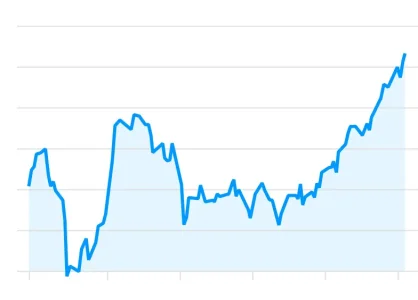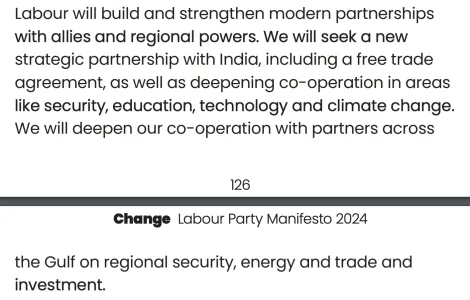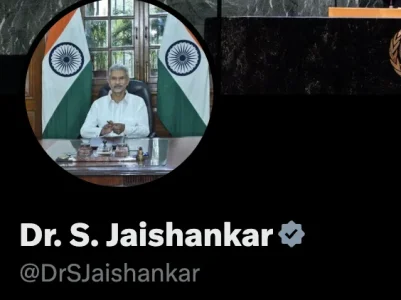So there’s a nation largely armed by Russia and which bankrolls Putin. What else would you call it?

www.telegraph.co.uk
Tom Sharpe
India is an enemy, not a friend or a neutral
So there’s a nation largely armed by Russia and which bankrolls Putin. What else would you call it?
217
Gift this article free
Indian Prime Minister Narendra Modi and Russian President Vladimir Putin embrace in 2024
Indian Prime Minister Narendra Modi and Russian President Vladimir Putin embrace in 2024 Credit: Evgenia Novozhenina/Reuters
Tom Sharpe
01 July 2025 5:13pm BST
Tom Sharpe
Today, India commissioned a new warship, the INS Tamal. She is the latest in a line of eight Talwar-class stealth frigates. Similar in displacement and length to our own Type 23 frigate, superficially at least, she has a similar array of weapons and sensors. The one exception being the BrahMos anti-ship and land attack missile, theoretically a beast of a weapon with a range over 500 miles at speeds up to Mach 3, which would be far in excess of anything we have.
But there is a problem. Tamal was built by Russia in their Yantar shipyard in Kaliningrad. For those of you who follow the Indian Navy, that they have some of their ships built by Russia will not come as news. Already an aircraft carrier, 50 per cent of their submarines and the Talwar class accounts for about 20 per cent of their fleet. Many of these programmes date back decades but of course, the international climate has changed rather a lot. India’s dependence on Russia for warships is at least reducing, but should it not already be close to zero?
Meanwhile, India’s trade in Russian oil reeks of duplicity. Despite Western sanctions, India’s refiners guzzle discounted crude, often shipped by dark fleet vessels dodging and falsifying their AIS tracking. By actively engaging with this trade, New Delhi flouts global rules, reaping economic rewards while feigning neutrality. The government’s coy silence on sanctioned oil flowing through Indian ports betrays a calculated dodge of accountability, undermining efforts to choke Russia’s war chest. India is financing Putin’s atrocities.
Putin avoids oil price cap with sales to India, but his profits take a hit Price of Russian crude delivered to India

Putin avoids oil price cap with sales to India, but his profits take a hit
Price of Russian crude delivered to India
Dark fleet ships thrive with India’s tacit aid. Russian insurers secured New Delhi’s nod in April 2025 to cover tankers shunned by Western firms. This greenlights sanctioned oil deliveries, breaching the G7’s $60-per-barrel cap. India’s lack of oversight lets these old and poorly maintained ghost ships flood its ports, with Russian crude imports hitting a 10-month peak in May.
Meanwhile President Modi surveys all with eyes and mouth firmly closed. His Moscow visits in 2024–2025 saw dark fleet deals, only curbed after US prodding this January. Modi’s refusal to address insurance loopholes or vessel opacity shows a man who doesn’t care about right and wrong, only money. He is quite willing to finance Putin if it means cheaper oil: in this, he is an enemy of the West, not a friend and not a neutral.
Militarily the dependence on Russian equipment doesn’t make much sense either. We are increasingly seeing how poor some Russian kit is. I suggested that the BrahMos was an impressive missile system earlier and, on paper at least, it is. But manufacturers’ brochures and warfighting reality can be very different things. Putin’s supposedly unstoppable Kinzhal and Zircon weapons have both proven to be very stoppable using American made interceptors, and by no means their best ones either.
To give another example, I sailed up the Elbe in company with the Tamal’s sister ship, the INS Teg, on her maiden voyage back in 2012. It was very clear from my position 100 yards astern of her that she was unable to maintain the ordered speed of six knots required to keep formation. It was clear because every time she pulsed one engine to try and do so, huge plumes of black smoke belched out of her funnels and onto nearby sailing vessels. Speaking to one of her senior officers once alongside it became clear that 10 knots was her minimum sustainable speed (using just one engine) and that they had had to place sentries all the way up the funnels such was the risk of fire from the build-up of soot as they tried to move slower than that. Maybe she was running on a tank of Russian oil just to add insult to injury, I don’t know. The point is, either by design incompetence, or political interference leading to the same, India had acquired a ship that was unable to move slowly through the water. This will never appear on a brochure but practically, of course, it is a serious problem: an anti-submarine frigate that cannot move slowly and quietly is not a great deal of use.
Another problem is choosing a country currently that is at war to service your systems and parts. The contract to deliver the S-400 air defence units is seemingly going ahead despite the number of missiles Russia has burned through defending against Ukrainian counterattacks. And this before we get to how much less effective the S-400 has been in real life compared to the claims. Tanks, rifles, fighter jets and nuclear submarines can be added to missiles and ships on a list that looks set to endure for decades.
In sum, Indian dependence on Russian weapons is slowly reducing but it could not be clearer that this isn’t from any desire to do the right thing. New Delhi’s unhelpful practices around illegal Russian oil are rapidly increasing. And, speaking to a recently retired senior official this morning, India’s neighbours get the same message – it’s India first and the rest of you be damned. Soon India is going to have to choose a side, or we’re going to have to treat them the way they’re basically treating us: as an enemy.
P.S. ARTICLE ALSO HAVE ACTIVE COMMENT SECTION E LASHKAR should do their bit
Caution: article is paywalled you guys can try circumvent that

 www.indiatoday.in
www.indiatoday.in













